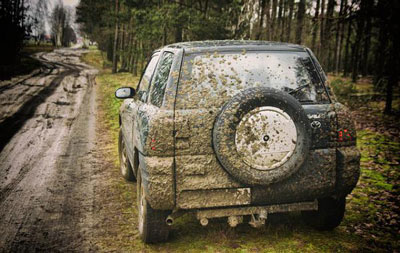
Most motorists don’t consider how exactly their vehicle transitions power from the engine to the wheels moving the automobile. Instead, everyday drivers are more interested in the amenities and technology available inside the cabin and ensuring their car or truck starts when cranked.
However, there are a variety of factors to consider when purchasing an automobile depending on an individual’s need, driving style, and conditions in which the vehicle will be driven regularly. Especially in terms of hazardous conditions, such as increased rainfall, snow driving, or gravel road use for a good portion of the vehicle’s life, then special consideration should be given to what drivetrain is needed.
There are essentially four available systems that power the wheels of a vehicle to turn therefore moving the mode of transportation in question. These include front-wheel drive or rear-wheel drive, which are both two-wheel drive systems. Opposite, four-wheel drive and all-wheel drive cars and trucks function differently.
Rear-Wheel Drive
These type vehicles typically have engine placement toward the front of the body while power is transitioned to the rear two wheels. Most cars were originally powered using this type of system but consumers have recently become infatuated with other means.
Due to the disadvantages of rear wheel drive like less control in certain conditions (i.e. snow, dirt, ice, or rain) drivers are moving toward more stability despite the potential infrequent use of other drive systems.
Front-Wheel Drive
Vehicles that utilize a front-wheel drive system typically have the engine over the drive wheels, adding increased traction. The advantages of front-wheel drive vehicles over their rear counterparts include the added stability in slick conditions.
However, both acceleration and steering are compromised due to the initial two wheels being responsible for vehicle movement.
Four-Wheel Drive
These drivetrain systems utilize a component where all four wheels are used to propel the vehicle. Almost always, a special function is needed to place the drive initiative into all four wheels as the car or truck is more commonly operated in a two-wheel drive scenario.
By adding drive capabilities to every wheel, when operating in four-wheel drive functionality both stability and control are enhanced. However, this drivetrain can be expensive and if underutilized a motorists may be better served by purchasing a two-wheel drive system.
All-Wheel Drive
Similar to four-wheel drive, all-wheel drive utilizes the same functionality but without the available switch or option of two-wheel capabilities. This is the biggest difference between four-wheel drive and all-wheel drive vehicles.
Otherwise, the all-wheel drive provides a good sense of control, is essentially a front-wheel drive car or truck and almost always utilizes technology to switch traction and drive capabilities to the rear wheels when necessary.
The experts at Mancinelli’s Auto Repair Center can assist you in determining the appropriate drivetrain for your situation or perform any necessary repairs or modifications regardless of automobile type. Their trained professionals will be happy to answer any and all questions regarding car care or perform a needed service to any model vehicle on the road. ASE certified mechanics are fully trained and certified to work on any car, van, SUV, or truck regardless of the current state. A full review and inspection of your automobile can be completed in a timely manner to keep your vehicle running both effectively and efficiently. Leave your auto with someone you know as most services can be administered the same day. Request an appointment online or call today.